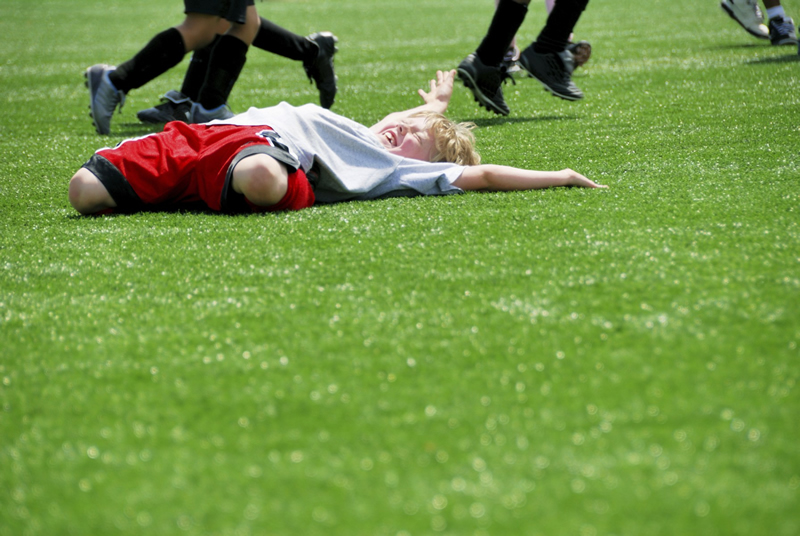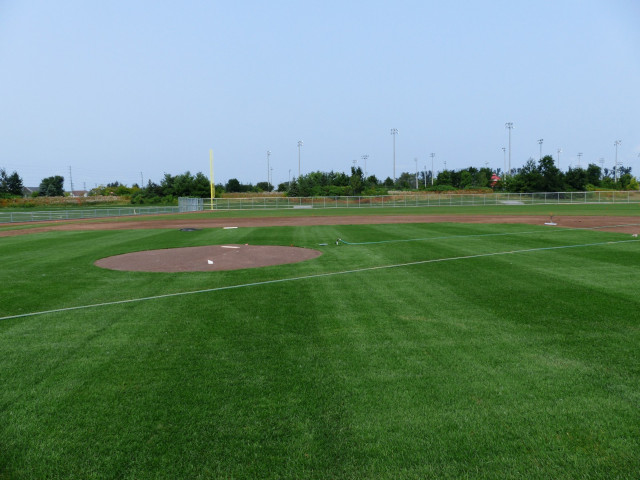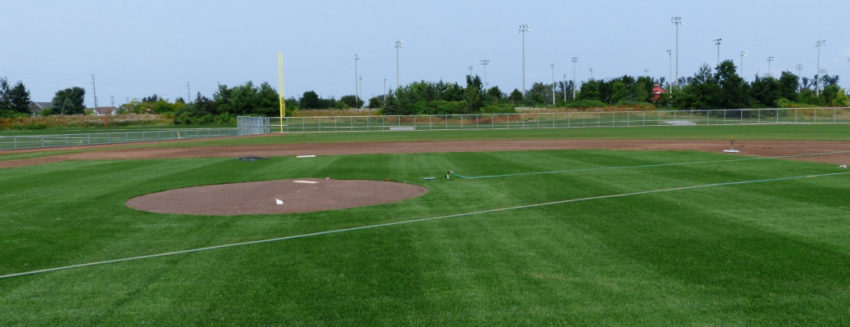Artificial turf has been a hot topic in the news lately. Many people are protesting the use of artificial turf at the World Cup in 2015. This includes some of the top female soccer players in the world. They’ve even filed a challenge in the Human Rights Tribunal of Ontario. Being that male players play on natural grass, the female players are claiming discrimination is a factor.
| “It’s tough because as female athletes we want to be treated equal and we want to be playing on grass,” American player Abby Wambach said.
In Major League Baseball, Toronto Blue Jays officials are hoping to have a natural grass surface at the Rogers Center by 2018. At the beginning of the 2014 season, only two major league teams began the season on artificial turf. One of those teams is the Blue Jays.
The Controversy Over Artificial Turf:
Athletes tend to prefer natural grass surfaces to artificial turf due to artificial turf’s lack of give. It’s not as forgiving as grass. Therefore, the players are more prone to injury. In addition, artificial turf can get hot. This turf can sometimes reach temperatures of close to 80°C on hot days.
It’s not just athletes that have issues with artificial turf. Parents, lawmakers, and environmentalists are all starting to raise concerns. These concerns range from “is it bad for the environment?” to “is it toxic?” to “does artificial turf cause cancer?”
Health Concerns – Do You Know What Your Child Is Playing On?
Crumb rubber, often used in artificial turf, can contain 30 chemical compounds that have been listed by the United States Environmental Protection Agency.
The following statement is also on the Environmental Protection Agency’s website:
“There have been concerns about the health implications of the use of recycled tire crumb in playgrounds and in synthetic turf athletic fields. EPA conducted a limited Scoping-Level Field Monitoring Study of Synthetic Turf Fields and Playgrounds. The purpose of the limited study was to test a method for measuring possible emissions from using synthetic turf on playgrounds and ball fields. The final report was issued in 2009 and, for the four sites studied, the concentrations of components monitored were below levels of concern. However, given the very limited nature of this study(i.e., limited number of components monitored, samples sites, and samples taken at each site) and the wide diversity of tire crumb material, it is not possible to reach comprehensive conclusions without the consideration of additional data. To supplement this study’s limited data, EPA met with state and local representatives in 2010 to review other available field monitoring studies.”
A Letter from the Congressman
Congressman Frank Pallone, Jr. (New Jersey-06) sent a letter in October of 2014 to Robin Ikeda. She is Acting Director of the Agency for Toxic Substances and Disease Registry (ATSDR). He stressed his concerns and called for more studies.
“It is clear that more data is needed to evaluate the risks that exist from exposure to crumb rubber in athletic turf and its effect on human health. Rubber tires often contain numerous chemicals considered carcinogens, including benzene, arsenic and phthalates, among others. Another question that remains is whether exposure to these harmful carcinogens could be amplified when tires are ground into tiny particles and athletes come into contact with the material on a regular basis.
Frank Pallone, Jr. (NJ-06) letter to Robin M. Ikeda, Acting Director Agency for Toxic Substances and Disease Registry, October 9, 2014.
Given that children and adolescents, who are particularly vulnerable to chemical exposures because of their size and are predominant users of athletic fields across the country, additional study of this issue is needed. According to the Agency for Toxic Substances and Disease Registry’s Principles of Pediatric Environmental Health,“Beginning before conception and persisting throughout childhood, children are often more susceptible to environmental toxicants compared to adults…[and] usually have increased exposures… compared to adults.”
October 8, 2014 NBC News reported on 38 cases of Non-Hodgkin Lymphoma and other cancers in soccer players. These cases were predominantly goalies that have played on artificial turf fields containing crumb rubber. However, the report acknowledged that no studies link crumb rubber to cancer. This list of cases does not equate into a scientific study.
California Bill Hopes To Ban Artificial Turf In Schools And Public Parks:
In December of this past year, Senator Jerry Hill introduced the The Children’s Safe Playground and Turf Field Act of 2015, SB 47. This Act would ban contracting for the installation of a new field or playground surface made from synthetic turf containing crumb rubber from used tires until January 1, 2018. In that time, the state will conduct a study to determine possible health risks.
“The Los Angeles Unified School District and city of New York have already implemented complete bans – this is just a temporary moratorium until a thorough analysis can be conducted,” says Senator Jerry Hill.
Before Canada joined in, the United States has been using artificial turf for years. This may be why we are seeing more studies and concerns coming from south of the border. We clearly do not know the long-term effects of artificial turf. We need to complete more independent studies.
Artificial Turf Is Not A Cheaper Option:
The reason we see so many schools, sports venues, and parks going to artificial turf is because of a common misconception. This misconception is that it is cheaper to maintain artificial turf. The University of Arkansas found in 2009 that “it is a myth that synthetic fields require less maintenance than natural turf grass fields.”
Synthetic fields need water to cool it down so it’s usable on hot days. Artificial turf needs disinfectants and pesticides to prevent mold and bacteria from taking hold. In addition, it requires sprays to reduce static cling and odors. It also requires drainage repair and maintenance. It is essential that you also vacuum the artificial turf to remove any debris.
The long-term costs are less with natural turf than synthetic turf. Requiring replacing every 8-10 years, artificial turf is not always more inexpensive than natural turf. Instead, renovations on a natural turf field are often less costly. You also need to dispose of the artificial turf and crumb rubber. This requires a working knowledge of the regulations in your area. In addition, you must keep in mind the cost to dispose of it. This is not to mention the cost to replace it.

Artificial Turf And The Cost On The Environment:
Natural grass absorbs greenhouse gas and converts it into oxygen. A study done by the Athena Institute in 2006 concluded that a school would have to plant 1861 coniferous trees to offset the greenhouse gasses created by an artificial turf field over a ten-year span.
Estimating the Required Global Warming Offsets to Achieve a Carbon Neutral Synthetic Field Turf System Installation by Jamie Meil, Lindita Bushi.
Cleaning artificial grass requires chemicals while natural grass cleans and renews itself. Grass decomposes whereas artificial turf ends up in landfill.
The debate continues, but here at Greenhorizons Sod Farms, the original green company, we are all about Mother Nature’s way. We grew and installed all the sod grass for the natural sports surfaces for the Pan Am Games. The President’s Choice Ajax Pan Am Ballpark, the CIBC Pan Am/ Parapan Am Athletics Stadium at York University in Toronto, and the Angus Glen Golf Club in Markham, have all been completed with the highest quality standards. These are standards that Greenhorizons Sod Farms lives by.

